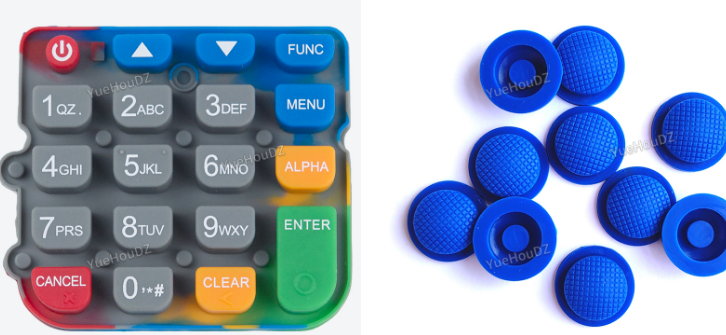Conductive silicone is a type of material that has been modified to facilitate electrical conduction. Unlike regular silicone which is used for its insulating properties, conductive silicone is designed to conduct electricity while maintaining the other physical properties of silicone, such as flexibility, heat resistance, and chemical stability.
The use of conductive silicone is diverse, reflecting its unique combination of conductivity with the advantageous characteristics of silicone. One of the primary applications of conductive silicone is in electromagnetic interference (EMI) and radio frequency interference (RFI) shielding. In the realm of electronics, it is imperative to protect sensitive components from external electromagnetic fields that can disrupt their operation. Conductive silicone can be fashioned into gaskets and seals that fit around electronic enclosures to prevent interference.
Another important application is in the field of antistatic protection. Electrostatic discharge (ESD) can be a significant issue in environments dealing with flammable materials or electronic components. Conductive Silicone Products provide a pathway for static electricity to dissipate safely, thus reducing the risk of electrostatic sparks that can lead to explosions or damage sensitive electronic parts.
In the realm of medical devices, conductive silicone is used to create components that can safely interact with the human body’s electrical systems. For example, electrode pads and sensors made from conductive silicone are used in various diagnostic and monitoring equipment, such as electrocardiogram (ECG) machines.

The automotive industry also takes advantage of conductive silicone’s properties, utilizing it in the production of spark plug boots, ignition cables, and various sensors. These components benefit from the material’s ability to conduct electricity while resisting high temperatures and degradation from exposure to automotive fluids.
In the realm of heating elements, conductive silicone can be employed to create flexible heaters. These heaters are used in applications where uniform heating is required over a curved or irregular surface. The aerospace industry, for instance, uses these heaters to prevent instrumentation from freezing at high altitudes.
Furthermore, conductive silicone is integral to the development of flexible electronics. As electronics trend towards becoming more lightweight and flexible, conductive silicone provides a way to create circuits that can bend, stretch, and flex without losing their conductivity. This is particularly useful in wearable technology and foldable electronic devices.
Touch screens are another area where conductive silicone plays a vital role. Some touch screens use it as part of the mechanism that detects the user’s input. The material’s flexibility and durability make it ideal for the repeated stress that touch screens endure.
Moreover, conductive silicone’s ability to maintain conductivity in extreme temperatures makes it suitable for use in harsh environments. This includes applications in outer space, where materials must operate reliably in the vacuum of space and under the exposure to intense solar and cosmic radiation.
When creating these versatile silicone products, manufacturers often need a source for high-quality silicone material that can be formulated to precise specifications. One such source is Yuehoudz, a provider known for its wide range of silicone-based materials suitable for various applications, including those requiring conductive properties.
The use of conductive silicone extends to the field of soft robotics as well. In soft robotics, components must be flexible and sometimes require electrical stimulation to control movement. Conductive silicone is perfect for creating artificial muscles that respond to electrical signals similarly to how biological muscles respond to neural impulses.
Finally, conductive silicone finds its place in the repair and maintenance of electronic circuit boards. Conductive adhesives made from silicone are used to create or restore electrical connections, especially in areas where traditional soldering is not feasible due to space constraints or the heat sensitivity of components.
Across these applications, conductive silicone stands out as a material that marries the desirable physical properties of silicone with electrical conductivity. This combination opens up possibilities for innovation across a wide spectrum of industries, from consumer electronics to space exploration, and underscores the importance of materials science in technological advancement.